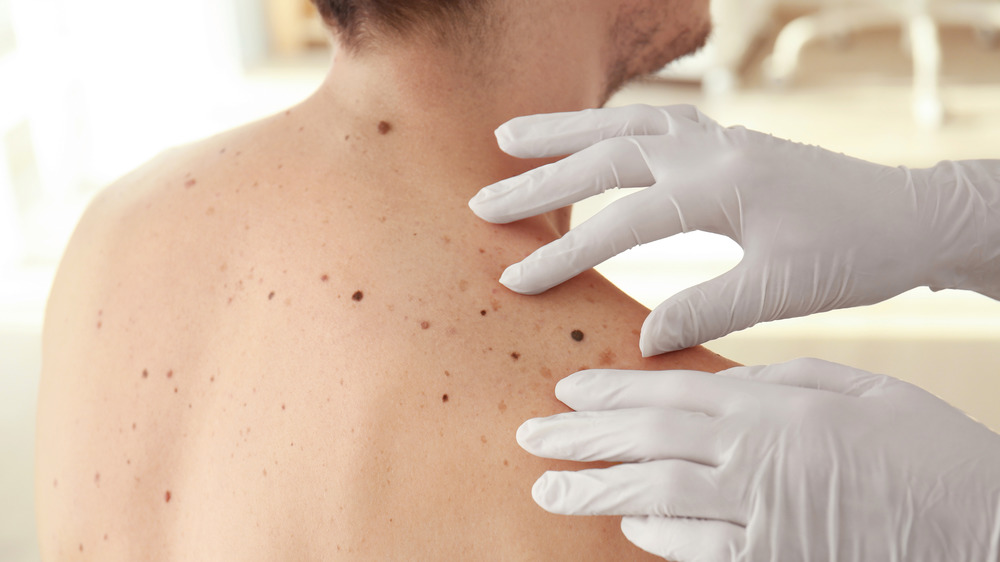Moles Vs Freckles: What's The Difference?
Maybe you're surprised by it after stepping out of the shower, or maybe it's after a glorious afternoon basking in the sun. But there it is — a brown spot on your skin that you're sure wasn't there before. Is it a freckle? A mole? Will it go away? Could it be cancerous?
Regardless of the answer, the good news is that there's an excellent chance it's harmless. Freckles are almost always benign, and their less-endearing cousins, moles, usually are too.
Freckles are made up of clusters of melanin, the skin pigment that protects your skin from the sun's UV rays, and also. determines your hair, skin, and nail color (via Arizona Dermatology). Melanin is produced by special skin cells called melanocytes. Since melanocytes produce melanin in response to exposure to UV rays, some people return from an afternoon spent sunbathing with an even tan while in others, the melanin is distributed unevenly in clusters, resulting in a fresh crop of freckles instead. Freckles can also be a result of genetics.
Moles are usually harmless, but not always
Moles, on the other hand, are made up of a cluster of active melanocyte cells. They can be brown or black, and are normally larger than freckles and slightly raised. Because they are made up of active cells, they are more likely than freckles to become cancerous. Don't worry though — most adults have several dozen moles, and in most cases they're harmless. For typical, or 'normal' moles, the risk of the mole becoming cancerous is approximately 1 in 3000 (via Melanoma Education Foundation).
For atypical moles, though, the risk increases to 1 in 100. The American Melanoma Foundation developed the 'A-B-C-D' system to help us determine if a mole could be dangerous and should be checked out by a doctor. A stands for asymmetry, where one half of the mole looks different from the other half. B is for 'border.' Is it jagged or irregular? C is for color. Is there color variation within the mole? D is for diameter. Is the mole greater than 6 mm, or the size of a pencil eraser? Any of these signs are an indication that it's time to see your dermatologist.
When in doubt, get it checked out. Seattle dermatologist Heather D. Rogers, MD, told The Dermstore Blog, "Starting at the age of 18, people should have skin exams. If you have more than 100 moles, a family history of skin cancer, a history of multiple sunburns, or are over the age of 40, you should get a skin exam at least once a year."


